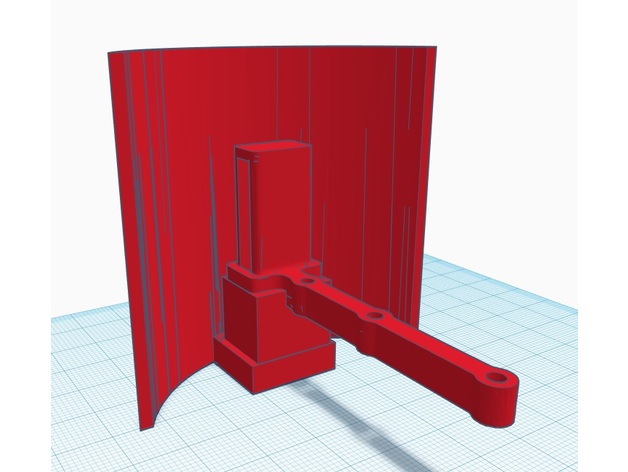Good tips !Which reminds me of something I only recently learned: If you open the Google Translate app on you phone and click the camera icon, you can point it at text and it will automatically identify the language and translate it. (Say what you will about Google -- and I do -- but they have some awesome technology.)
You are using an out of date browser. It may not display this or other websites correctly.
You should upgrade or use an alternative browser.
You should upgrade or use an alternative browser.
Hand-made Yagi Uda adapter antenna
- Thread starter Mavic_Mini_Pilot
- Start date
RogerDH
Well-Known Member
The way I learned about that function was that I bought a Xiaomi Seabird 4K action camera that had Chinese as the menu language, with apparently no instructions anywhere on the web on how to change it. I tried to find an older Google app I had used called Word Lens that translated text images, but found that they had rolled it in with their other translate stuff and improved it with automatic language recognition. It was like magic to see "Language" and "English" pop up on the Seabird menu.Good tips !
monkeystador
New Member
I am looking for the picture of the opened antenna from the remote? Anyone so kind to link, pleasE?
canonistul
New Member
Boky136
New Member
Hi! I have mavic mini CE version and i have bad signal. What yagi antena will be good 2.4 or 5.8? When i put them i need chose manual 2.4 or 5.8? Thanks
Maybe one of both. Not sure.


Yagi Booster For DJI Mavic Models And Spark Drone Range Antenna | eBay
Find many great new & used options and get the best deals for Yagi Booster For DJI Mavic Models And Spark Drone Range Antenna at the best online prices at eBay! Free shipping for many products!
www.ebay.com
OldEd
Active Member
Blade slap
Well-Known Member
- Joined
- Dec 5, 2016
- Messages
- 73
- Reactions
- 50
- Age
- 71
NOIs it possible to use a FCC controller with a CE Mini? Has someone tried it?
Bloodied_Mini
Member
There are 2 designs for Yagi-Uda antennas, one of 2.4 GHz and another for 5.8 GHz.Hi! I have mavic mini CE version and i have bad signal. What yagi antena will be good 2.4 or 5.8? When i put them i need chose manual 2.4 or 5.8? Thanks
So far, it is unsure whether both antennas on the remotes will emit and receive the 2 bands or it is 1 for each band but you may want to try it out if you have time. Thus, it is recommended that when you select 2.4 GHz in the DJI Fly App, you put on the 2.4 GHz version on both of your remote antennas and if you select, 5.8 GHz, you put on both 5.8 GHz version.
Just got my 2.4 GHz printed locally, and awaiting 5.8 GHz version to arrive from China. Got the copper rod ready as well but still need to figure out a way to cut them precisely without power tools (might just go buy a grinder this weekend).
Does anyone have the actual Distance between directors/dipole/RC Antenna and Reflector?
Everywhere I see just length of each but not distance in between. Also is 3mm necessary for the elements or does it not matter much?
Having trouble finding materials while in confinement. Thanks!
Everywhere I see just length of each but not distance in between. Also is 3mm necessary for the elements or does it not matter much?
Having trouble finding materials while in confinement. Thanks!
Does anyone have the actual Distance between directors/dipole/RC Antenna and Reflector?
Everywhere I see just length of each but not distance in between. Also is 3mm necessary for the elements or does it not matter much?
Having trouble finding materials while in confinement. Thanks!
9.7mm, there's an image on page 2 I think. does that answer your question?
Id actually like to see more ENGLISH videos of a CE or plain 5.8Ghz Mavic in action in open areas and built-up residential areas with potential interference to actually measure results, than plugging into a machine and ooking at theoreticals.
RoOSTA
Hi,9.7mm, there's an image on page 2 I think. does that answer your question?
Id actually like to see more ENGLISH videos of a CE or plain 5.8Ghz Mavic in action in open areas and built-up residential areas with potential interference to actually measure results, than plugging into a machine and ooking at theoreticals.
RoOSTA
The only pic I saw was for 5.8GHz not 2.4 and I saw someone mention a calculation which says distance between elements should be 0.4 x wavelength = 49.96mm for 2.4GHz but no mention on where the antenna should sit. The pictures show it at uneven distances to adding to the confusion...
Oh and because it wasn't enough, online calculators give you differing numbers..
I ended up making a pair for me with foam, 3.5mm rods and it seemed to work. Reached 2km over the sea then got a bit uneasy and came back. Furthest I went before was 1.6km but 180deg from where I went today so I'll have to test that BUT no time today AND we've got some pretty windy days upcoming...
cemugurcekic
Member
Amazing, many thanks! I'll work on that while I wait for better weather (25kmph wind 35kmph gusts)There is a Japanese channel he is showing the distance between the roads for 2.4GHz version
cemugurcekic
Member
Hey let me know how it goesAmazing, many thanks! I'll work on that while I wait for better weather (25kmph wind 35kmph gusts)
hi guys... im new to the group... im looking to design my own antenna's and hopefully resell a few as i have loads of 3d printers. ive also just started my website where i will be selling my 3d printer mods and drone mods+ anything else i can sell... gotta try anything after the covid lul ive been in... im not too keen on stealing peoples designs directly for sale (dont mind if i redesign something from scratch that does the same job - thats fair game)... its obviously looking like the physical layout of these antennas is gonna be the same for my design as whats already out there...
anyway to cut a long story.... anyone seen this mashup of the yagi + parabolic? ... anyone in the know maybe tested these? would a parabolic work better or worse on the back of a yagi or is it just gonna be over kill... thought id post it anyway as i havent seen anyone else mention this design and i thought it was interesting...

 www.thingiverse.com
www.thingiverse.com
anyway to cut a long story.... anyone seen this mashup of the yagi + parabolic? ... anyone in the know maybe tested these? would a parabolic work better or worse on the back of a yagi or is it just gonna be over kill... thought id post it anyway as i havent seen anyone else mention this design and i thought it was interesting...

Mavic mini 2.4 Ghz super range extender by steeod
A combination of both types of antennas boosters, yagi and parabolic. The last element (reflector) could also be much bigger. Its for Mavic Mini CE version (Europe), so I focused on 2.4 Ghz, which gives by default the maximum distance. I will be happy if someone tests it and write the results...
FoxhallGH
Well-Known Member
Welcome to the group ...hi guys... im new to the group... im looking to design my own antenna's and hopefully resell a few as i have loads of 3d printers. ive also just started my website where i will be selling my 3d printer mods and drone mods+ anything else i can sell... gotta try anything after the covid lul ive been in... im not too keen on stealing peoples designs directly for sale (dont mind if i redesign something from scratch that does the same job - thats fair game)... its obviously looking like the physical layout of these antennas is gonna be the same for my design as whats already out there...
anyway to cut a long story.... anyone seen this mashup of the yagi + parabolic? ... anyone in the know maybe tested these? would a parabolic work better or worse on the back of a yagi or is it just gonna be over kill... thought id post it anyway as i havent seen anyone else mention this design and i thought it was interesting...

Mavic mini 2.4 Ghz super range extender by steeod
A combination of both types of antennas boosters, yagi and parabolic. The last element (reflector) could also be much bigger. Its for Mavic Mini CE version (Europe), so I focused on 2.4 Ghz, which gives by default the maximum distance. I will be happy if someone tests it and write the results...www.thingiverse.com
A Parabolic dish works by focusing RF energy back to a point where you locate an antenna element (dipole). Due to the focussing, the received energy is much higher than if the dipole was sitting in space by itself. In the same regard, the transmitted energy from the dipole is reflected in a single direction - like a flashlight focuses a light beam in one direction.
In contrast, a Yagi antenna is an extension of a 'transmission line' and uses the distance between the transmission elements to build 'standing waves' that add in the forward direction but cancel each other out everywhere else. The Yagi has a set of elements consisting of a dipole, with a reflector bar behind it, and director bar in front.
Although the results are similar, the two technologies are working in entirely different and unrelated ways.
The 'steeod' item you posted above, seems to be using the parabolic part as an extension to the reflector bar. It's parabolic in the horizontal plane but is not a dish. The mistake here is the designer has taken the name of the 'reflector' element in the Yagi literally. The reflector element is not there to 'mirror' RF energy back onto the dipole. The way it works is that the RF energy passing it induces Electro-Magnetic energy into the bar. That causes the reflector bar to 're-emit' the same signal. Due to its position and length in relation to the dipole element, it adds to [amplifies] the RF signal arriving at the dipole (or being Transmitted by the dipole) - as long as that received signal is coming from a point in the same plane as the dipole and the reflector - and the dipole and reflector are perpendicular to the source of transmission - and the transmission source dipole is the same polarity (vertical in the case of a DJI Mavic) as the Yagi's elements.
In the real-world, the choice of 'Parabolic' or 'Yagi' antenna comes down to the frequency of the RF service you are carrying. Yagi's serve the lower frequency ranges, while Parabolics are used up in the microwave end of the spectrum, where you no longer use a dipole antenna but focus the energy into a Wave-Guide.
It's a long time since I did my antenna theory as a Civil Aviation Engineer, but I can tell you that if putting a parabolic reflector on a Yagi antenna made an appreciable difference, you would see them everywhere!
In regard to 'stealing' designs - I'm afraid that there is ONLY one design for a Yagi, and even if you did all the physics to design it from scratch - unless you got the Math's wrong - it would look exactly the same as what's out there right now. You may as well buy a product that customer feedback says it works - and base your design on that!
Similar threads
- Replies
- 10
- Views
- 931
- Replies
- 8
- Views
- 810
- Replies
- 0
- Views
- 1K
DJI Drone Deals
New Threads
-
-
-
3 We hit another Log, also destroyed our Jib. Awesome Week
- Started by Vernon
- Replies: 0
-
-
Members online
Total: 3,107 (members: 11, guests: 3,096)











